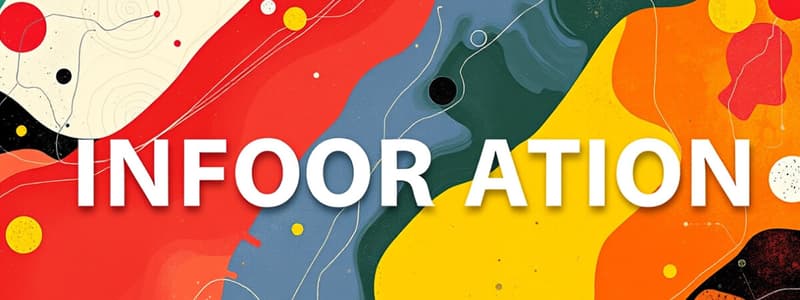Podcast
Questions and Answers
What is the main function of the capture driver in a network analyzer?
What is the main function of the capture driver in a network analyzer?
- To provide network configuration options
- To filter and store captured network traffic (correct)
- To analyze hardware faults
- To display real-time network performance metrics
Which type of network analyzers primarily requires hardware components for operation?
Which type of network analyzers primarily requires hardware components for operation?
- Software-based network analyzers
- Hardware network analyzers (correct)
- Cable tap network analyzers
- Ethernet-only network analyzers
What component of a network analyzer stores captured data until it is needed for analysis?
What component of a network analyzer stores captured data until it is needed for analysis?
- Network Interface Card
- Capture Driver
- Buffer (correct)
- Analyzer Interface
What type of errors can some hardware network analyzers identify?
What type of errors can some hardware network analyzers identify?
Which method might a buffer use to manage stored data when it reaches capacity?
Which method might a buffer use to manage stored data when it reaches capacity?
Which of the following best describes the real-time analysis feature of a network analyzer?
Which of the following best describes the real-time analysis feature of a network analyzer?
Why might a network analyzer need a hub or cable tap?
Why might a network analyzer need a hub or cable tap?
What is a potential limitation of software-based network analyzers?
What is a potential limitation of software-based network analyzers?
What is an example of a hardware problem that network analyzers can detect?
What is an example of a hardware problem that network analyzers can detect?
Which network adapters might some network analyzers support?
Which network adapters might some network analyzers support?
Study Notes
Types and Sources of Information
- Data collection can be internal (from within the organization) or external (from other organizations).
- Primary sources:
- Original works like poems, diaries, court records, interviews, surveys, and original research.
- Scholarly research published in academic journals.
- Secondary sources:
- Descriptive or analytical materials such as dictionaries, encyclopedias, and textbooks.
- Books and articles interpreting or synthesizing original research.
- Tertiary sources:
- Organization tools for primary and secondary sources including indexes and abstracts.
- Databases provide online access to citations and sometimes digital copies of resources.
Research Question Development
- Select a topic of genuine interest and conduct preliminary research.
- Analyze the target audience to tailor the research questions accordingly.
- Progress through a series of evaluative questions to refine the main research question.
Types of Questions
- Open-ended questions: Allow for detailed responses and deeper insights.
- Closed-ended questions: Require brief answers like yes/no; preferred in surveys for easier statistical analysis.
Data Types
- Quantitative data: Numerical data suitable for mathematical analysis, must be current and reliable.
- Qualitative data: Non-numerical data reflecting thoughts, observations, and opinions, often obtained through open-ended questions.
Sampling Techniques
- Census: Collecting information from all individuals in a small organization.
- Judgment or Convenience Sampling: Selecting a specific group, suitable for more extensive organizations.
- Random sampling: No predetermined selection pattern; ensures diverse representation.
- Systematic sampling: Reduces variance in estimates by spreading out sample selection.
Server Types in Large Networks
- File and Print Servers: Manage access to files and printers.
- Application Servers: Host client/server applications and data for clients.
- Mail Servers: Manage email data flow similar to application servers.
- Fax Servers: Handle fax traffic and share fax modem resources.
- Communications Servers: Facilitate data flow and email between various networks.
- Directory Services Servers: Allow users to locate and secure information on a network.
Identifying Business Requirements
- Business requirements justify project initiation and outline expected benefits for stakeholders.
- Can be documented in project charters, business cases, or vision statements.
Network Analysis
- A network analyzer integrates hardware and software to monitor network performance.
- Key components:
- Hardware: Predominantly software-based, compatible with standard OS and NICs; some systems analyze hardware faults.
- Capture Driver: Captures raw network traffic and filters desired data.
- Buffer: Temporary storage for captured data, can employ methods like round-robin for efficient data management.
- Real-time Analysis: Offers immediate analysis of incoming traffic data for prompt evaluations.
Studying That Suits You
Use AI to generate personalized quizzes and flashcards to suit your learning preferences.
Related Documents
Description
Test your knowledge on the various types and sources of information, including primary, secondary, and tertiary sources. This quiz will help you identify how to gather data and formulate research questions effectively. Challenge yourself with questions designed to enhance your understanding of research methodologies.




